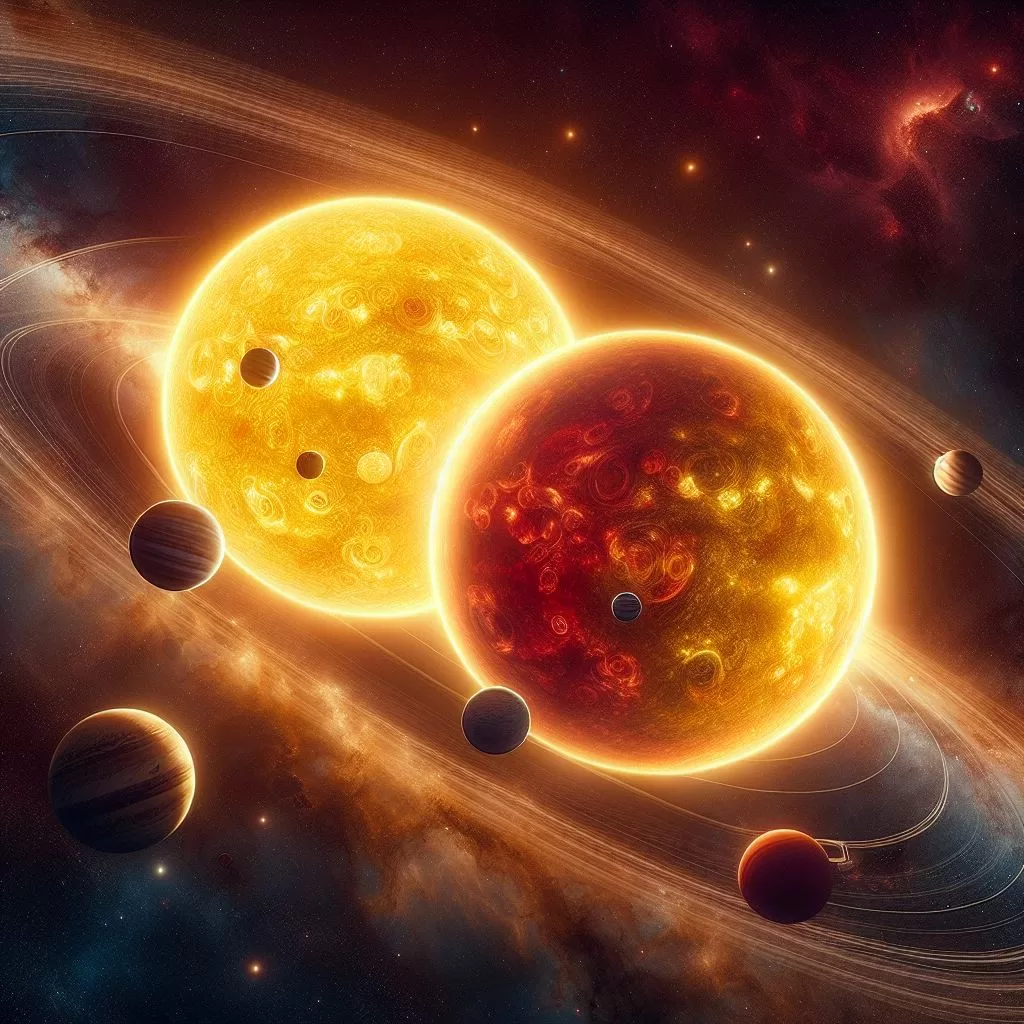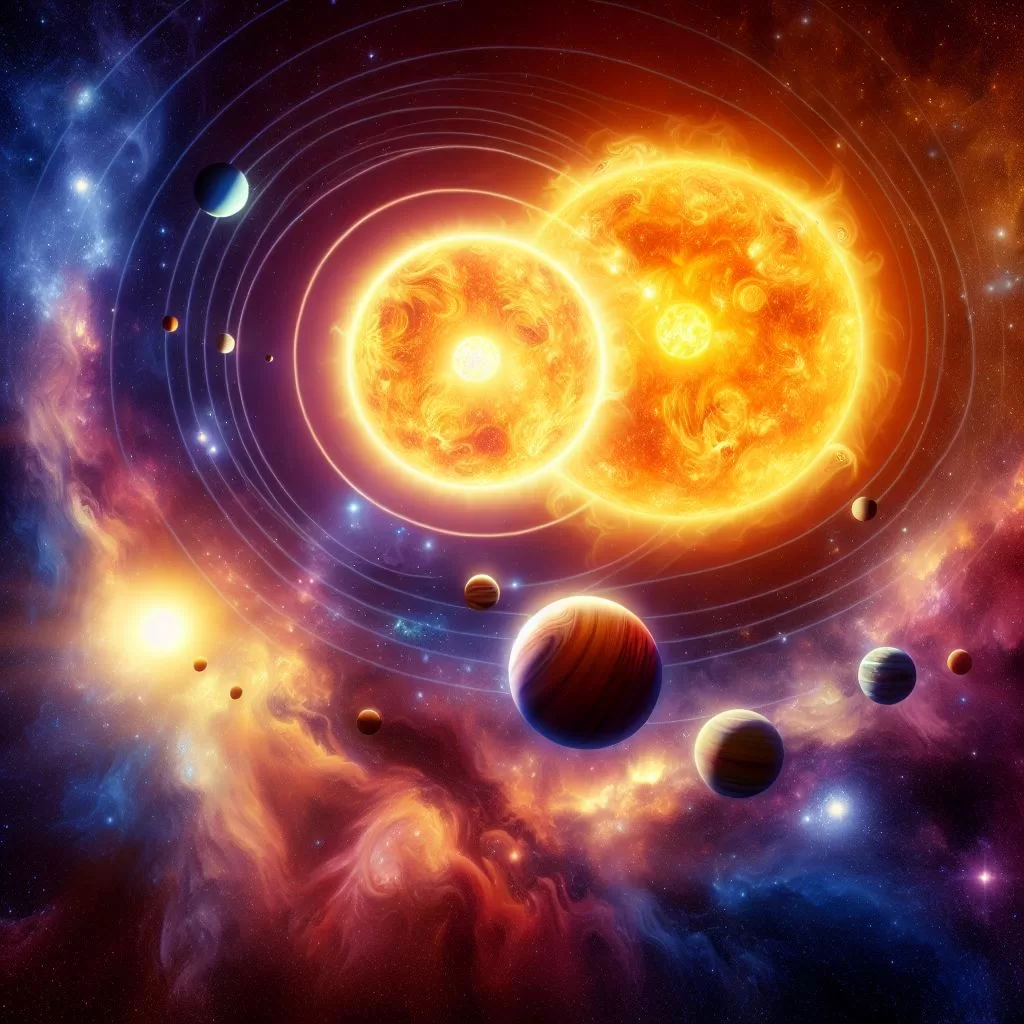Many stars in our galaxy exist in pairs, but our Sun is a notable exception. Recent scientific discoveries suggest that our Sun may have once had a companion star. This raises the intriguing question: where did this companion go?
Our Sun is somewhat of an isolated traveler. It orbits in one of the Milky Way’s spiral arms, taking us on a journey around the galaxy roughly once every 230 million years. The nearest star to our Sun, Proxima Centauri, is 4.2 light-years away. This distance is so vast that even the fastest spacecraft ever built would take more than 7,000 years to reach it.
In our galaxy, binary stars—pairs of stars that orbit each other—are quite common. These binary systems are found throughout the Milky Way, and their prevalence makes our Sun’s solitary status seem unusual. Recently, astronomers have even discovered a pair of stars orbiting in close proximity to the supermassive black hole at the center of the Milky Way. This is surprising because the intense gravitational forces in that region were thought to either tear stars apart or crush them together.
The frequent discovery of binary star systems has led some scientists to propose that perhaps all stars were originally born in pairs. This hypothesis suggests that each star had a stellar sibling at birth. If this is true, it raises an intriguing question: was our Sun once part of a binary system, with its companion lost over time?
Gongjie Li, an astronomer at the Georgia Institute of Technology, believes this is a distinct possibility. “And it’s very interesting,” she says. The idea that our Sun might have had a companion star in the past opens up new avenues of research and speculation about the early history of our Solar System.
Fortunately for us, our Sun does not have a companion today. If it did, the gravitational influence of a solar sibling could have had dramatic effects on the orbits of Earth and the other planets. Such a gravitational pull could have caused our planet to experience extreme temperature fluctuations, making it inhospitable for life as we know it.
The closest binary stars to Earth, Alpha Centauri A and B, orbit each other at a distance of about 3.6 billion miles, or 24 times the Earth-Sun distance. These stars provide a nearby example of a binary system, but they are still far enough away that their gravitational effects do not impact our Solar System.
The idea that our Sun might have a faint companion star, often referred to as Nemesis, has been a topic of speculation for decades. This hypothetical star was first proposed in 1984 as a possible explanation for periodic mass extinctions on Earth. However, multiple surveys and studies have failed to find any evidence of such a star, leading to a decline in support for the Nemesis hypothesis.
Despite the lack of evidence for a current companion star, the possibility that our Sun once had a companion in the distant past remains. When our Sun first formed 4.6 billion years ago, it might have been part of a binary system. Over time, this companion star could have been lost due to gravitational interactions with other stars or the dynamic processes within the galaxy.
The idea that our Sun was once part of a binary system is supported by the observation that many other stars in our galaxy exist in pairs. If binary star formation is a common process, it is reasonable to consider that our Sun might have followed a similar path during its early history.
Understanding whether our Sun once had a companion star could provide valuable insights into the formation and evolution of our Solar System. It could also help explain certain characteristics of our Solar System, such as the distribution of planets and other celestial bodies.
Research into the possibility of a former companion star for our Sun is ongoing. Astronomers continue to study the dynamics of binary star systems and the conditions under which stars can lose their companions. Advances in observational technology and computational modeling are helping scientists explore these questions in greater detail.
The search for answers about our Sun’s past is part of a broader effort to understand the history and evolution of stars in our galaxy. By studying binary star systems and their interactions, scientists hope to uncover new information about the processes that shape the universe.
In conclusion, while our Sun is currently a solitary star, the possibility that it once had a companion remains an intriguing area of research. The idea that our Sun might have been part of a binary system adds a new dimension to our understanding of the Solar System’s history and the dynamic nature of the galaxy.



2 responses to “The Sun’s Lost Companion: Unraveling the Mystery of Our Solar System’s Possible Binary Past”
Verey good infırmation
Thank you for your comment